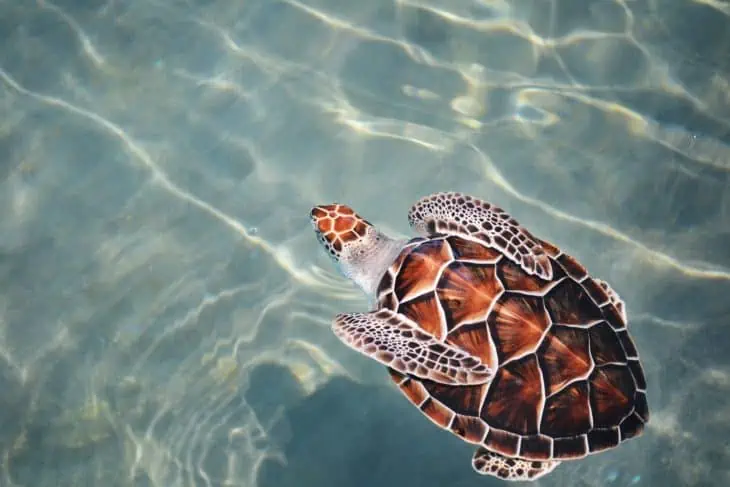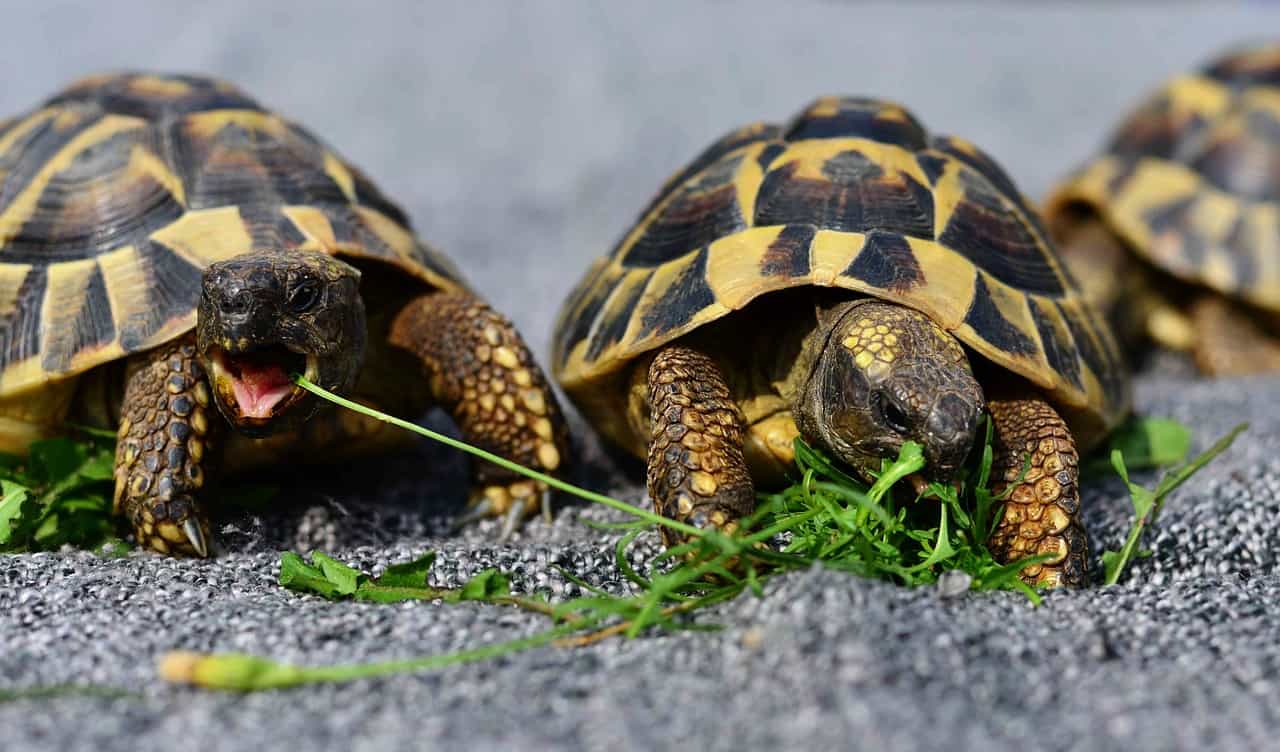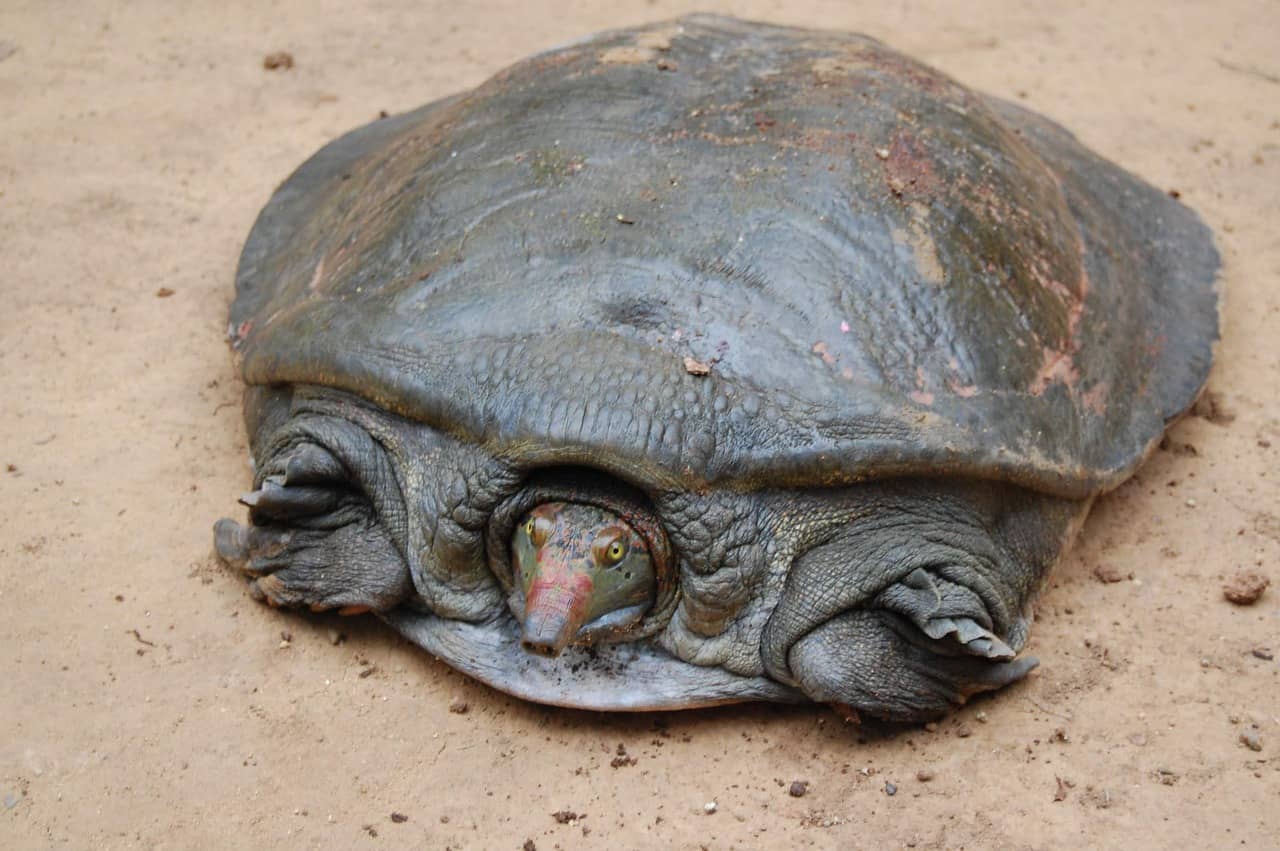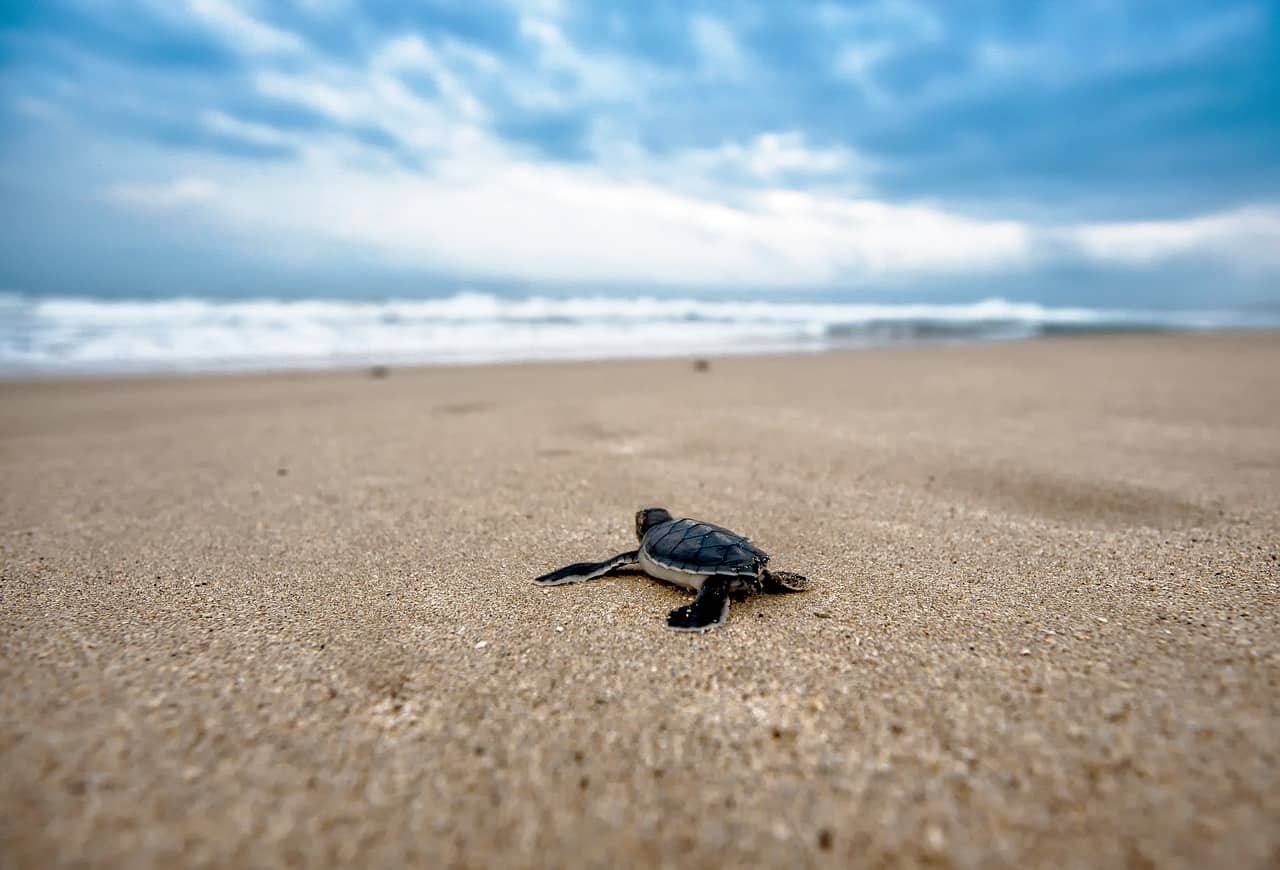
Turtles are majestic creatures that come in all shapes and sizes. On the outside, they may seem to live a very simple and sedentary life, but when you take a closer look, you will find them to be truly enchanting creations. Check our quick rundown of fascinating turtle facts, and you will surely agree!
For example, do you know that the shell over a turtle’s body is made of its own rib cage and spine? It consists of about 50 bones. These bones come together to make a hard and strong protective cover for the turtle. This shell is with them from birth and grows with them until they get older, which means a turtle can never outgrow the size of its shell.
Do you also know that turtles are some of the oldest reptiles in the world? Some live as long as 150 years! How is that for a long and beautiful life? Most species of turtles can live both on land and in water. Their webbed feet or flippers help them thrive in aquatic environments.
Here’s yet another fun fact: sea turtles can breathe air and remain underwater for a long period of time. They can even sleep while submerged! The majority of sea turtles spend their entire lives at sea, only returning to lay eggs on nesting beaches. They are very agile and graceful swimmers due to their streamlined shells and huge paddle-shaped flippers. Sea turtles’ rear flippers are used as rudders to steer in the water.
Interested in learning more? Check out our collection of amazing turtle facts below.
- Turtles have existed in this world for more than 200 years.
- There are over 350 species of turtles.
- Some species of turtles can weigh more than 300 kilograms or 661 lbs.
- Sea turtles can hold their breath for up to 5 hours.
- Some can grow more than 130 centimeters or 51 inches.
- Turtles are reptiles.
- Tortoise and terrapin are the other common terms for turtles.
- Tortoises are turtles that live on land.
- Terrapins refer to turtles that inhabit the water.
- Other species of turtles are highly endangered.
- Turtles use their jaw to chew and break their food.
- Tortoises have short and muscular feet and they move slowly.
- Their shells protect them from predators.
- A group of turtles is called a bale.
- Some people keep them as pets.
- The color of turtles’ shells vary — some are brown, green, or black.
- As they don’t have vocal cords, turtles produce hissing and low pitch sounds to communicate.
- They use their tongue to swallow food.
- Turtles also shed their old skin but unlike snakes, they don’t do it at once.
- Turtles are categorized based on how they pull back their necks into their shells.
The turtle's shell has 60 bones.

A shell of turtles has three main parts: the carapace (top shell), the plastron (lower shell), and the bridge which joins the upper and the lower shells. The inner shell of turtles has 60 bones including the ribs and the backbone. Some intricate turtle facts!
Turtles can't come out of their shells.
As opposed to popular belief, turtles can’t leave their shells. In fact, they can’t live without their shells. Their shells function both as their skin and ribcage. Without their shells, a turtle won’t survive at all.
Bigger turtles live longer.
Among the reptile family, turtles have the longest lifespans. Regular turtles that are kept as pets can live from 10 to 80 years while larger turtles can live for more than 100 years. Some records show that there are turtles that lived for more than 150 years.
Spanish sailors named Galapagos Island after the turtles they found there.
When the Spanish sailors discovered an island in 1535, they named the island “Insulae de Los Galopegos,” which means ” island of tortoise,” after the giant turtles found in the area. The term “Galapago” is a Spanish term for tortoise.
The giant tortoise is one of the biggest species of tortoise.
Of all the vertebrates, the giant tortoise has the longest lifespan. In the wild, they can live for more than 100 years. In captivity, they live around 170 years. The gentle giant is also one of the largest species of turtles, some can weigh as much as 550 pounds or 249 kilograms and grow as long as 5 feet or 60 inches.
Jonathan the tortoise is the oldest living animal on land.
At approximately 189 years old, Jonathan the tortoise is a Guinness World Record holder for being the oldest animal alive today. He was brought to the island of Saint Helena, South Atlantic Ocean along with three other tortoises in 1882 and is still alive and kicking. Even though he is already blind, he can still navigate his way across the island as if he’s still a youngster.
Turtles don't have teeth.
Only young turtles have teeth which they use to break out from their eggs, but these incisors will eventually disappear. Instead, like birds, turtles have pointed beaks which they use for breaking down food. They also have flat jaws which help them grind their food.
Turtles eat a wide range of food.

Turtles’ food depends on what is available in their habitat. Land turtles typically eat earthworms, snails, beetles, fruits, grasses, and flowers. Aquatic turtles are carnivorous. They eat small fish and sometimes even the carcasses of other animals
Snapping turtles are heavier than the usual turtles.
Snapping turtles or alligator snapping turtles are famous for their powerful jaws and distinct ridges on their shells. These ridges are similar to those of an alligator’s hence their other moniker. They inhabit bodies of freshwater in North America, England, and Canada. With a weight of around 18 to 70 kilograms or 40 to 155 pounds and shells with a length of 40 to 70 centimeters or 16 to 28 inches, snapping turtles are one of the most formidable turtles in the world.
The leatherback turtle has a teardrop-shaped body.
The leatherback turtle or also commonly called lute turtle or leathery turtle is the biggest of all the turtle species. They can be distinguished by their soft carapace or top shell. Its big and elongated top shell has 7 ridges and is dark gray with white spots. In addition, leatherback turtles have big pairs of front flippers that help them swim through the water.
African Sideneck turtles are common turtle pets.
One type of turtle that can be kept as a pet is the African Sideneck turtle. It was originally discovered in the regions of southern and eastern Africa. African Sideneck turtles are great companions because they are compact, active during the day, and not endangered. However, they tend to be aggressive to other people and animals.
Softshell turtle has a flattened shell.

Softshell turtles are a species from North America that can be distinguished by their top shells which are soft, flat, and rubbery. Their long necks and elongated snouts bearing the nostrils are also some of their most striking features. Don’t be fooled! They might look lethargic, but softshell turtles are carnivorous and can vigorously hunt their prey.
Chinese softshell turtle is commonly used in making turtle soup.
The Chinese softshell turtle is a species that is native to China and commonly raised in Chinese turtle farms. Commercially, the Chinese softshell turtle is used in making turtle soup with their meat as the main ingredient. It is considered a delicacy in some Asian countries.
People enjoy its “good taste” and believe it has health benefits such as lowering blood pressure, improving kidney function, and removing toxic substances.
Turtle's penis can erect and increase in size.
Just like a human male’s sex organ, a turtle’s penis can erect and increase in size. A study says that as their penis expands, its length can also increase by up to 50% and its width by 75%. Located at the base of their tails, it can have the color of gray, purple, or black.
Turtles are cold-blooded.
Like other reptiles, a turtle’s body temperature depends on its environment. They cannot produce their own body heat. They keep their temperature at a steady level by staying in the water or by keeping themselves exposed to the sun.
Turtles lay eggs annually.
Turtles lay their eggs during the warm seasons of the year. Both aquatic and land turtles lay their eggs on beaches. They dig the sand using their flippers to prepare their nest where they lay about a hundred eggs, usually at night. They go back to the waters once the eggs are laid.
The incubation period of turtle eggs can be as fast as 45 days.

After 45 or up to 70 days, hatchlings or baby turtles will begin to break out from the eggs using their “egg tooth,” or temporary tooth. Once they are out of the eggs, they will still stay in the nest for several days until they have the energy to swim in the water. Hatchlings usually get out of their nest during nighttime as there are fewer predators.
Turtles can sleep underwater.
Turtles need to rest or sleep just like other animals. In the nighttime, most turtles sleep underwater. They also sometimes sleep while floating on the surface. If a turtle can’t get into the water to sleep, it will look for a safe place like a hole, a pile of leaves, or mud. Turtles can also take naps at any time during the day.
Large sharks are the common predators of sea turtles.
Hatchlings and young turtles have several predators like fire ants, lizards, raccoons, foxes, wild pigs, birds, coyotes, and carnivorous fish. While an adult sea turtle has fewer predators, its most common predators are the most ferocious ones: killer whales and sharks. The tiger shark, in particular, often takes a bite on the turtle’s flippers and even on its shell and breaks it. Sharks savor the taste and the protein content of the turtles.
Turtles can dive to depths up to 960 feet.
Deep turtle facts! Turtles have the ability to hold their breath which helps them find food in the ocean. They can dive into bodies of water as deep as 960 feet or 292 meters.
Interestingly, a leatherback turtle can even dive more than 1000 meters or 3,280 feet. In general, turtles can stay underwater for about 45 minutes to 1 hour. They do surface every five minutes to breathe.
Was this page helpful?
Our commitment to delivering trustworthy and engaging content is at the heart of what we do. Each fact on our site is contributed by real users like you, bringing a wealth of diverse insights and information. To ensure the highest standards of accuracy and reliability, our dedicated editors meticulously review each submission. This process guarantees that the facts we share are not only fascinating but also credible. Trust in our commitment to quality and authenticity as you explore and learn with us.
